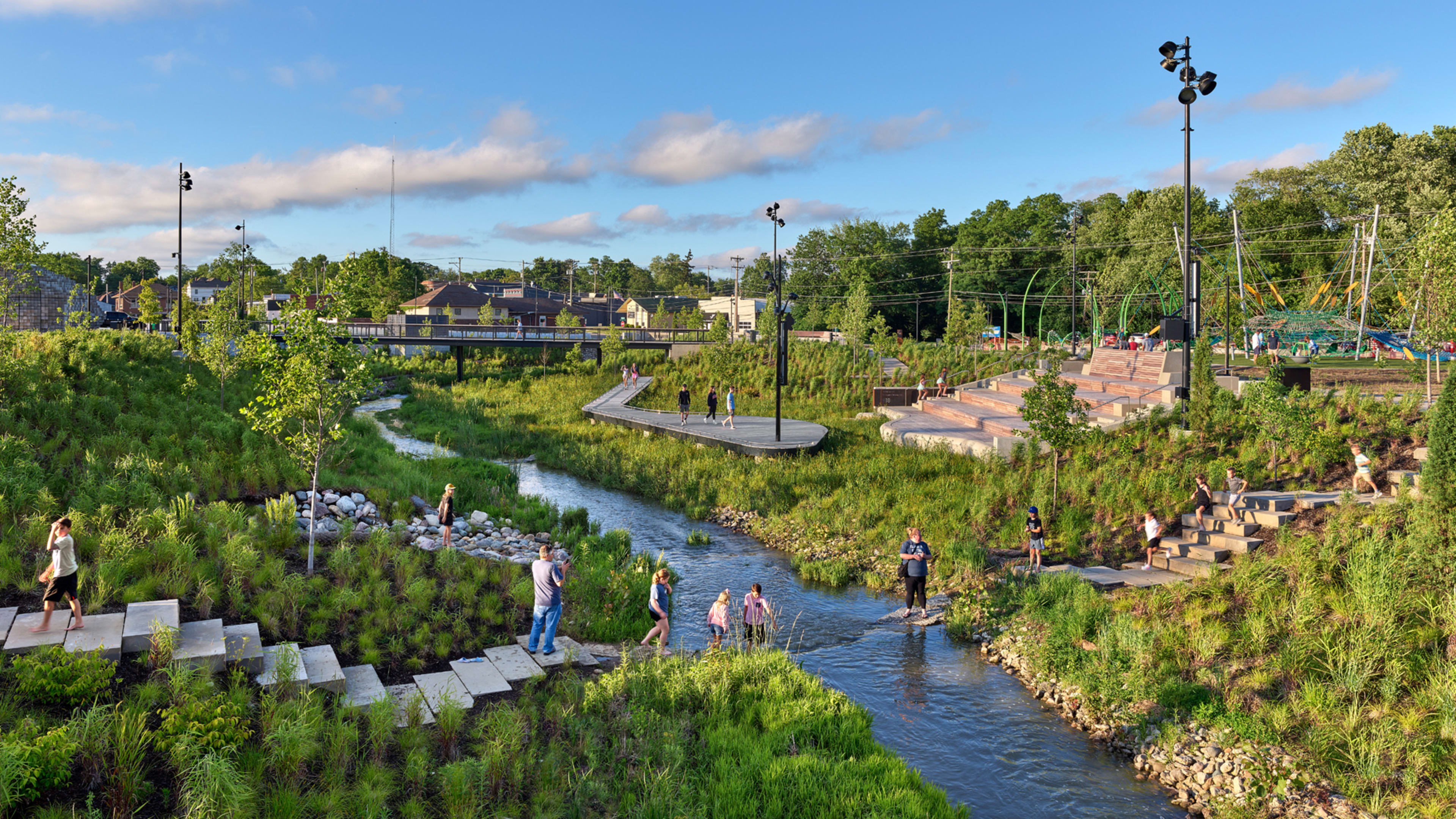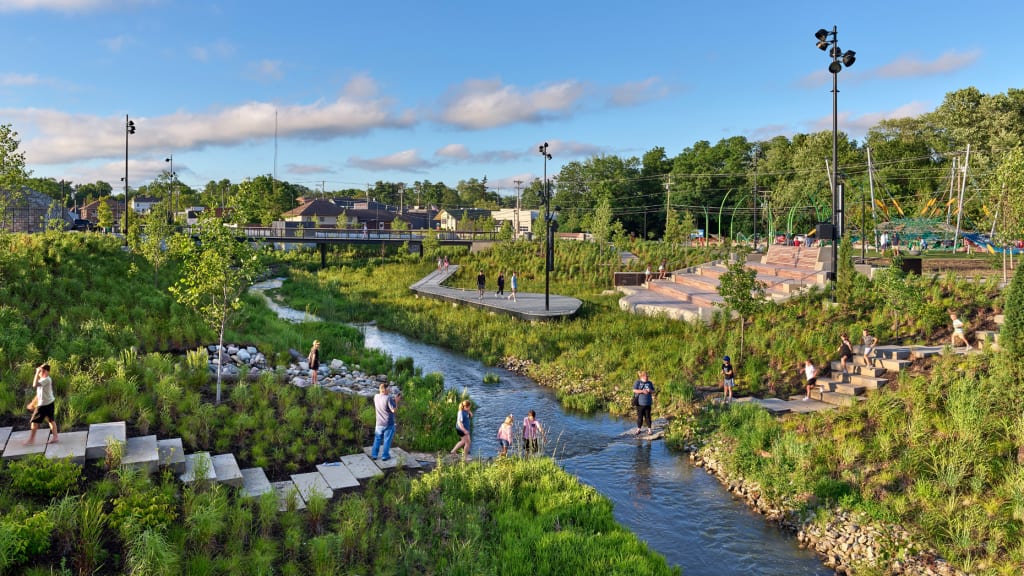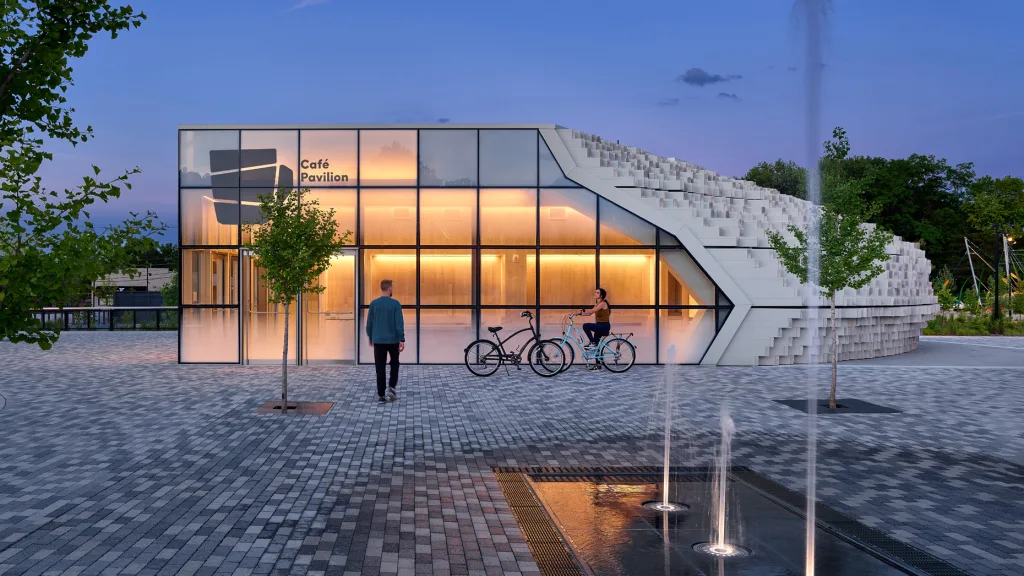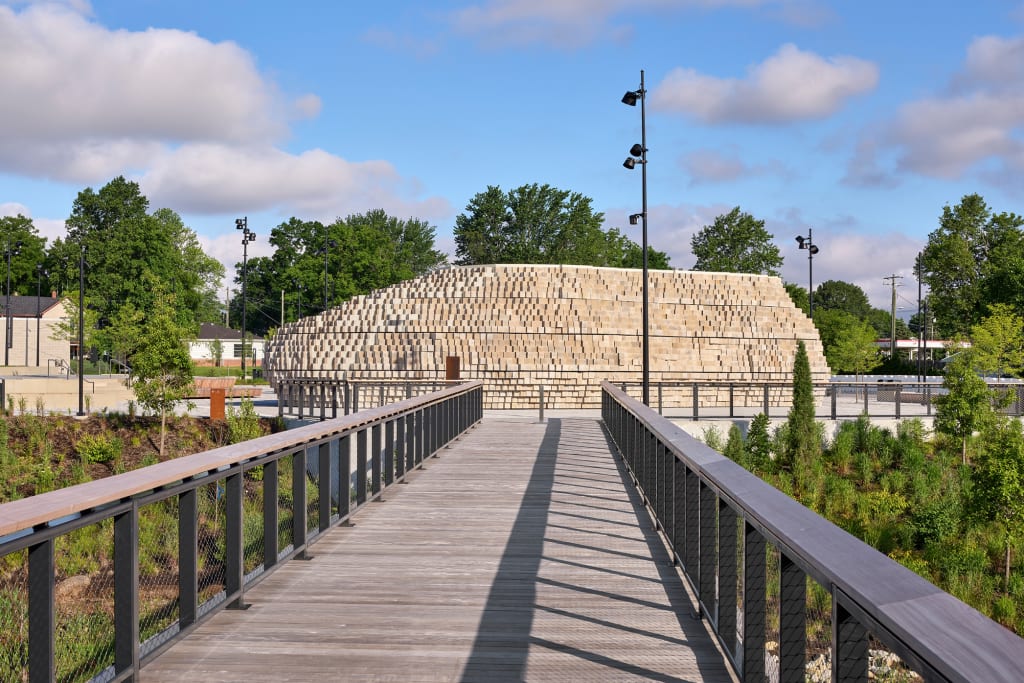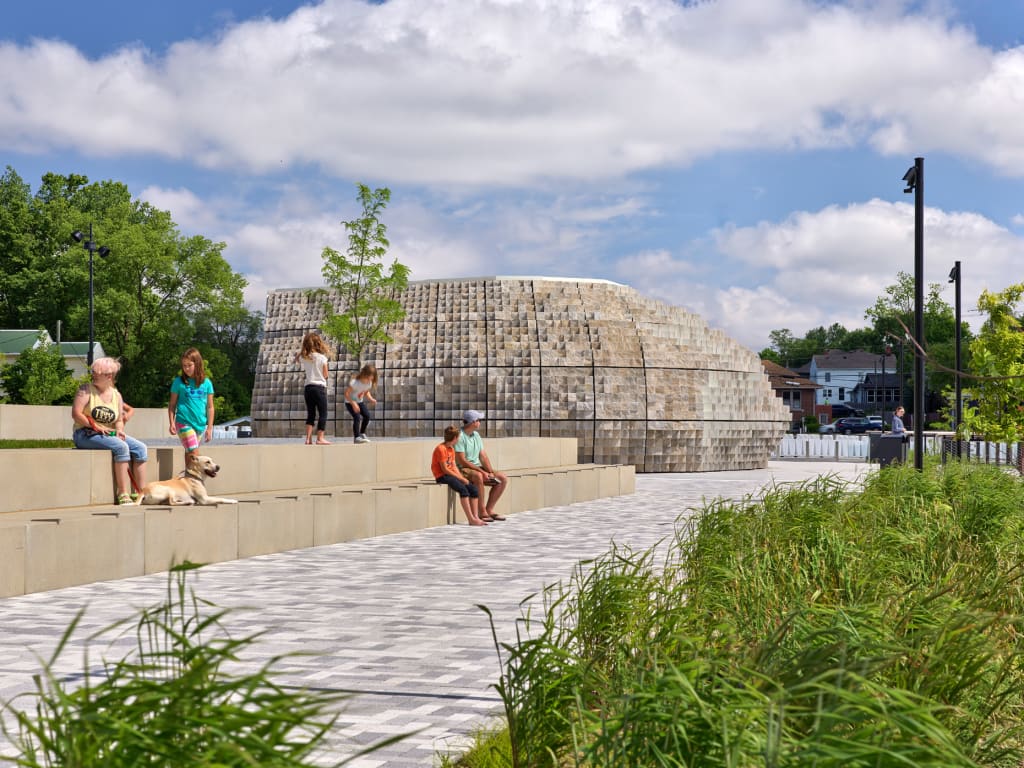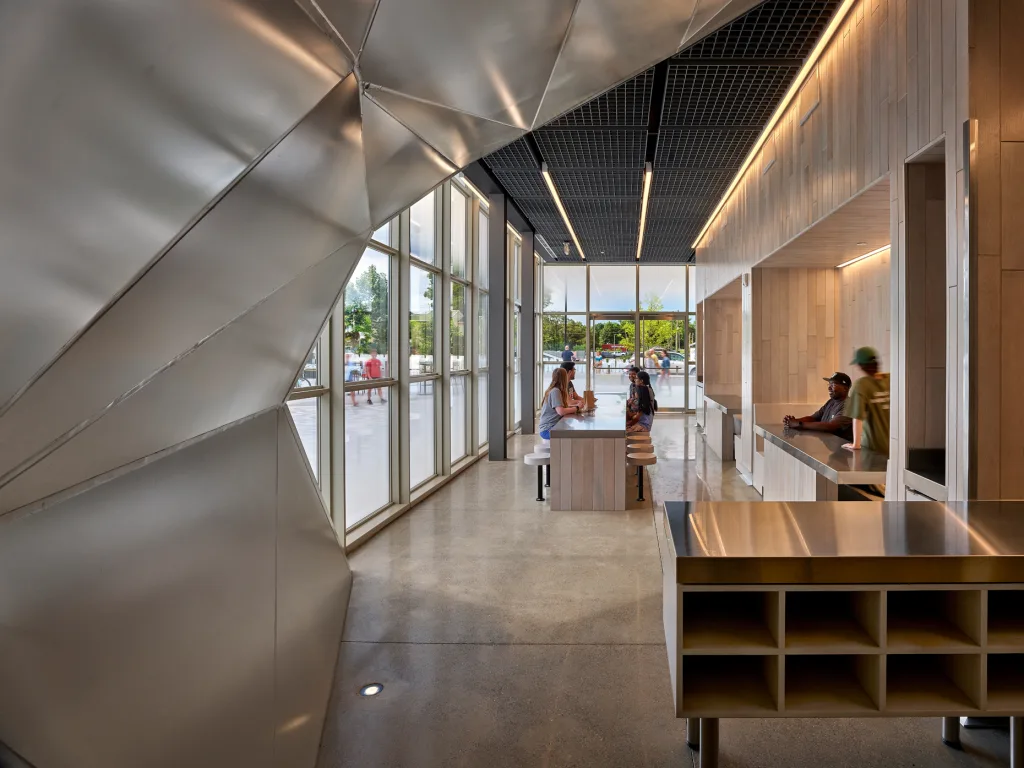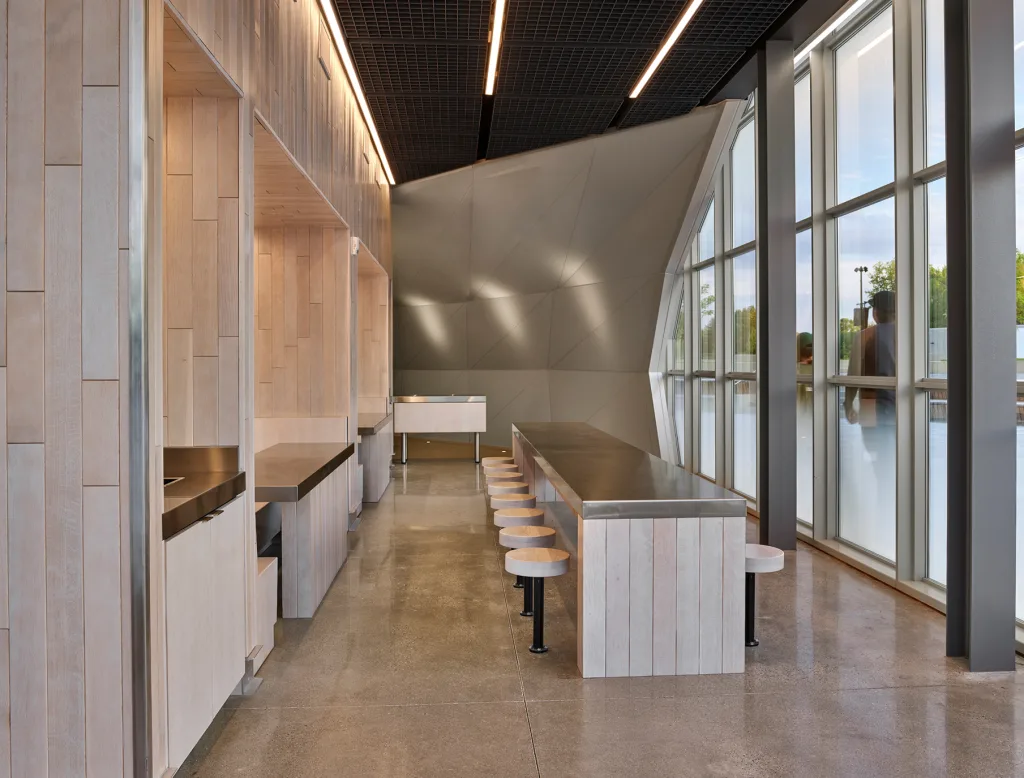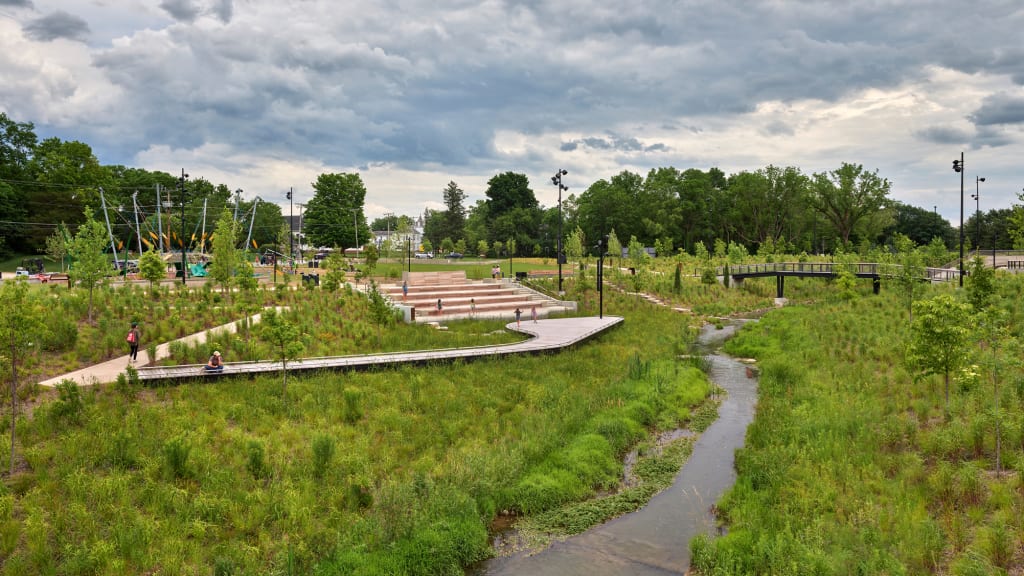Nearly 200 years ago, Congress passed a series of so-called Swamp Acts in 1849, 1850, and 1860. These pieces of legislation enabled more than a dozen U.S. states to reclaim federally-owned swampland and turn them it profitable agricultural fields. The acts were well-intentioned—the country needed land to cultivate, and unused swamps were right there for the taking—but the consequences were devastating. The federal water policy displaced indigenous cultures, disrupted ecological systems (most notably in Florida’s Everglades), and left large swaths of lands drained of water and prone to flooding.
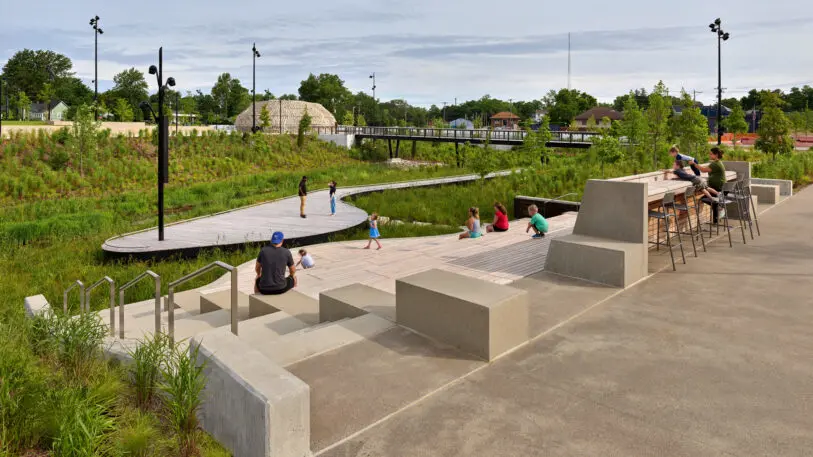
One of those lands lies at the heart of Westfield, Indiana, where a new park seeks to revert the site to what it was before the Swamp Act of 1850. Designed by a consortium of architects led by David Rubin Land Collective, the 7.8-acre Grand Junction Plaza Park boasts a HWKN-designed pavilion made of the same limestone quarry that was mined to dress the Empire State Building and handsome Corten steel wayfinding signs by Bruce Mau Design. But its most distinctive feature gently flows through the middle: a stream known as Cool Creek.
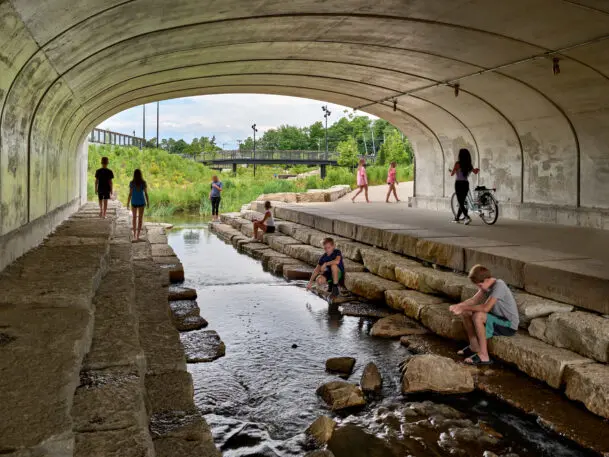
Grand Junction Park is part of a growing effort to “rewild” cities by rehabilitating natural landscape like flood plains or wetlands, or daylighting rivers that were once buried in tunnels (like the Saw Mill River in Yonkers, New York, which was resurfaced in 2016 after spending nearly a century buried under city street.) Many of these practices, including daylighting, started with the Clean Water Act of 1972, but have taken on a new level of urgency in the climate change era. Indeed, restoring these natural features can reduce flooding, absorb water, and cool cities by reducing the urban heat island effect. As evidenced by Grand Junction Park, they can be turned into a great public space, too.

David A. Rubin, founder of David Rubin Land Collective, says that before the Swamp Act the land around Westfield was known for its “verdant creeks and babbling brooks.” Then Cool Creek was engineered into a V-shaped channel to expedite its flow. The process eroded its banks and made it vulnerable to floods like the 500-year storm event that flooded the town in 2013, where debris in the still-channelized stream got stuck in a 48-inch pipe upstream, blew it out, and flooded the site.
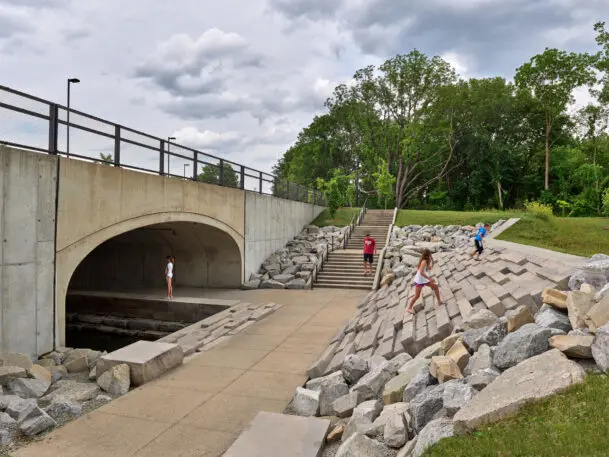
Today, the creek is once again a natural feature of the town. The landscape architects widened the bed of the creek and re-sculpted the land around it. They lined much of its shoreline with a ribbon of rocks known as riprap to protect it from eroding, planted native vegetation, and added a series of terraces that serve as a buffer if the creek overflows during a storm. Where the 48-inch pipe once was, they built in an overflow dam that allows the water to cascade down a slanted wall that doubles as an informal climbing surface. And in multiple spots throughout the creek, they built a series of partially submerged J-hook vanes, which look a bit like J-shaped barrier made of stone, and help create turbulence that’s visible on the surface. “The more turbulence you create, the slower the water becomes,” says Rubin.
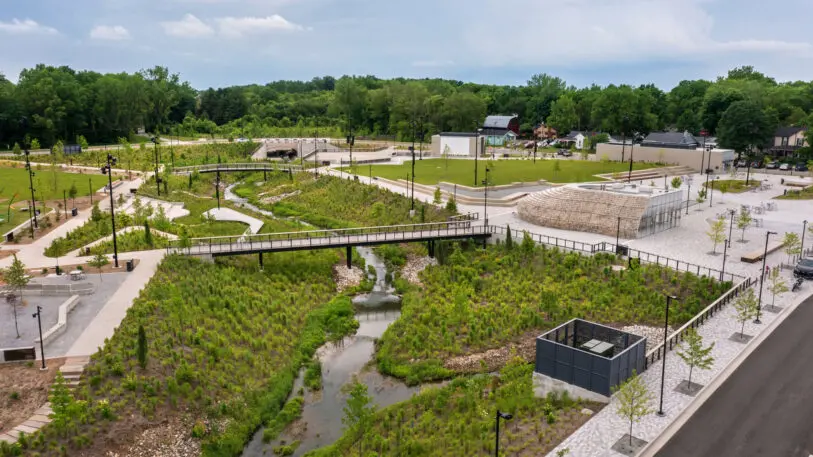
Somewhere around the middle of the park, the creek is bisected by a pathway that allows people to get right down to the edge of the water—and cross to the other side while stepping on one of those J-hook vanes. “The whole notion is that you can go over it, through it, kids go right into it,” says Rubin. “It’s a piece of infrastructure that has social purpose.”
Recognize your brand’s excellence by applying to this year’s Brands That Matter Awards before the early-rate deadline, May 3.
